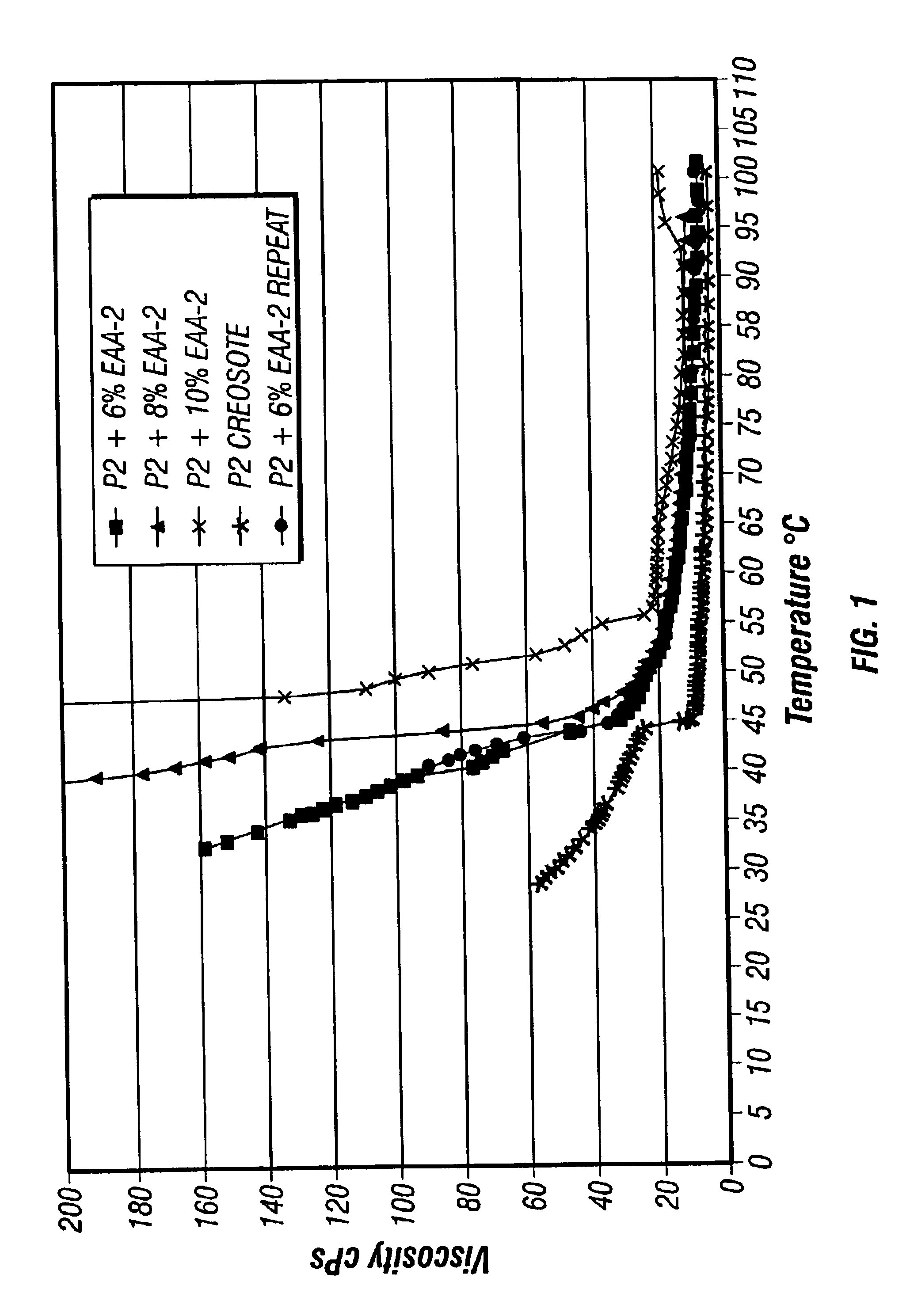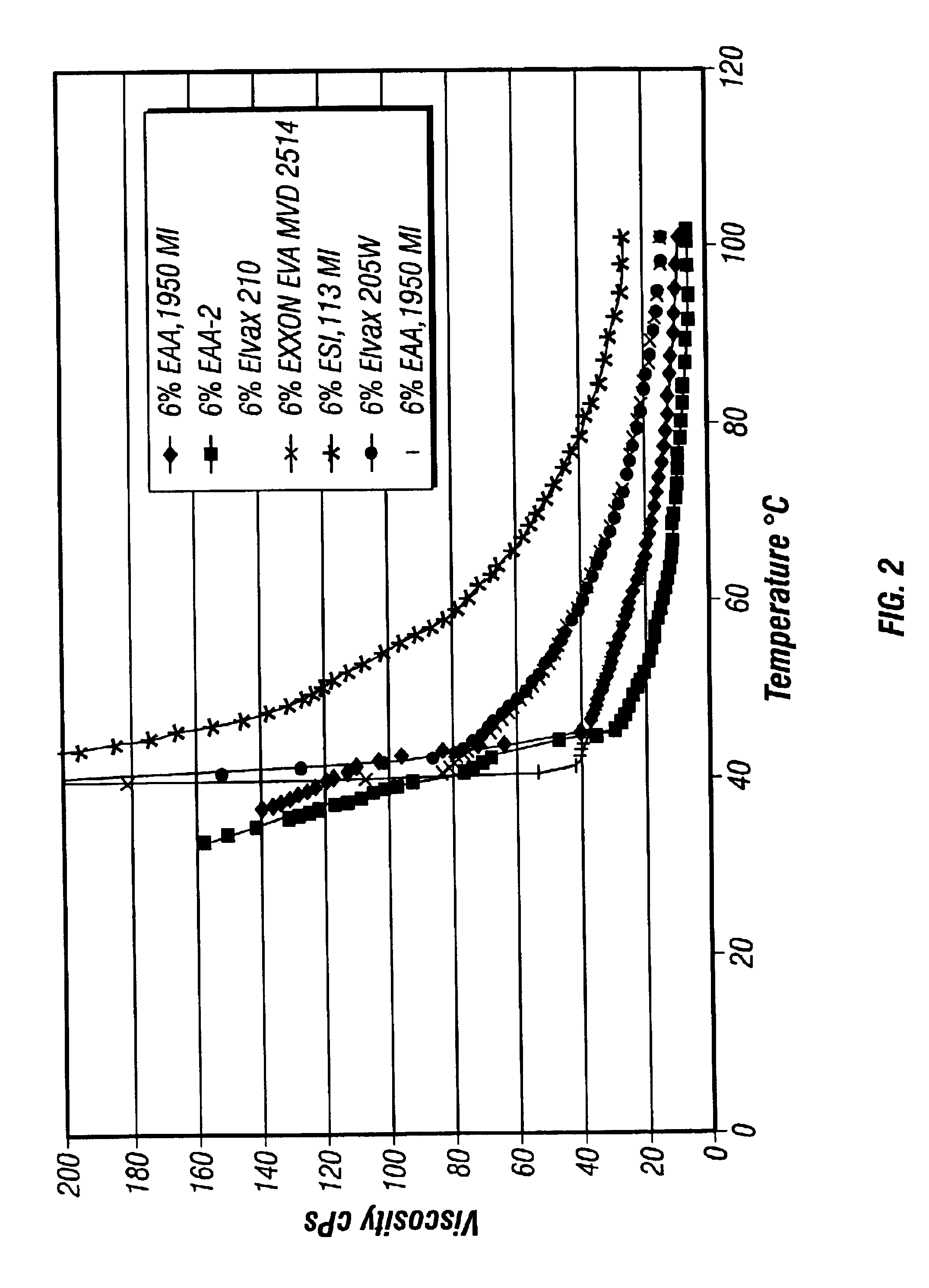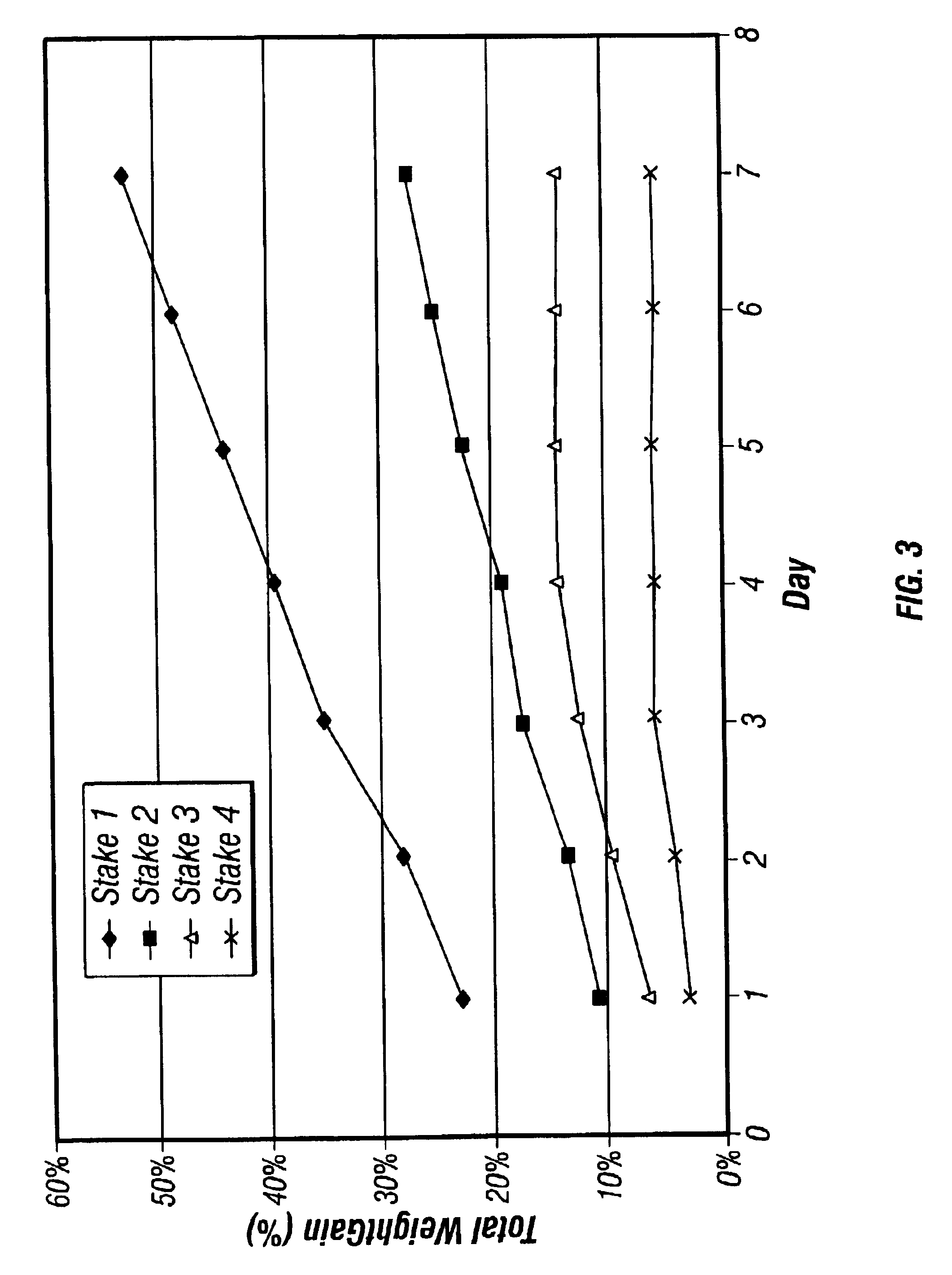Wood treatment composition and method of use
a wood treatment and composition technology, applied in the field of composition and method of treating wood, can solve the problems of inability to adapt to the service life of wood, inability to withstand inability to fully absorb the effects of water,
- Summary
- Abstract
- Description
- Claims
- Application Information
AI Technical Summary
Benefits of technology
Problems solved by technology
Method used
Image
Examples
example 1
[0088]191 grams of P2 creosote obtained from Koppers Industries and 19 grams of EAA-2 interpolymer from The Dow Chemical Company (as described in Table III) were mixed in a 400 ml beaker with a stirrer bar on a hot plate. The mixture was slowly heated to about 164° F. At this temperature, it was observed that the polymer was still on top of the creosote. The mixture was further heated to 196° F. At this temperature, the polymer was still on top of the creosote. When the mixture was heated to 205° F., it was observed that the polymer dissolved into the creosote under agitation. After about 30 minutes, the mixture was allowed to cool down to room temperature. The mixture was a thick sludge with no visible phase separation of the polymer from the creosote.
example 2
[0089]In this example, an EAA-3 interpolymer with 20 wt. percent of acrylic acid and a melt index of 1950 g / 10 min. was mixed with P2 creosote according to the procedure described in Example 1 except otherwise indicated. 200 grams of creosote were heated to 203° F. Then 12.76 grams of the EAA interpolymer were added to the heated creosote, and the mixture was stirred rigorously. After about 5 minutes, all of the interpolymer dissolved in the creosote. After additional 5 minutes of agitation, the mixture was cooled to room temperature. A relatively homogenous mixture was obtained. No visually identifiable phase separation was present.
example 3
[0090]200 grams of P2 creosote obtained from Koppers Industries were mixed with 12.68 grams of an ethylene vinyl acetate copolymer available from Exxon designated as ESCORENE™ ULTRA MV-02514 (see Table IV below for typical properties). After the mixture was heated to 200° F. and held at 250° F. for about 5 minutes, the ethylene vinyl acetate copolymer appeared to be completely dissolved by the creosote. Upon cooling to room temperature, a relatively homogenous mixture was obtained.
PUM
| Property | Measurement | Unit |
|---|---|---|
| glass transition temperature | aaaaa | aaaaa |
| glass transition temperature | aaaaa | aaaaa |
| melt index | aaaaa | aaaaa |
Abstract
Description
Claims
Application Information
 Login to View More
Login to View More - R&D
- Intellectual Property
- Life Sciences
- Materials
- Tech Scout
- Unparalleled Data Quality
- Higher Quality Content
- 60% Fewer Hallucinations
Browse by: Latest US Patents, China's latest patents, Technical Efficacy Thesaurus, Application Domain, Technology Topic, Popular Technical Reports.
© 2025 PatSnap. All rights reserved.Legal|Privacy policy|Modern Slavery Act Transparency Statement|Sitemap|About US| Contact US: help@patsnap.com



